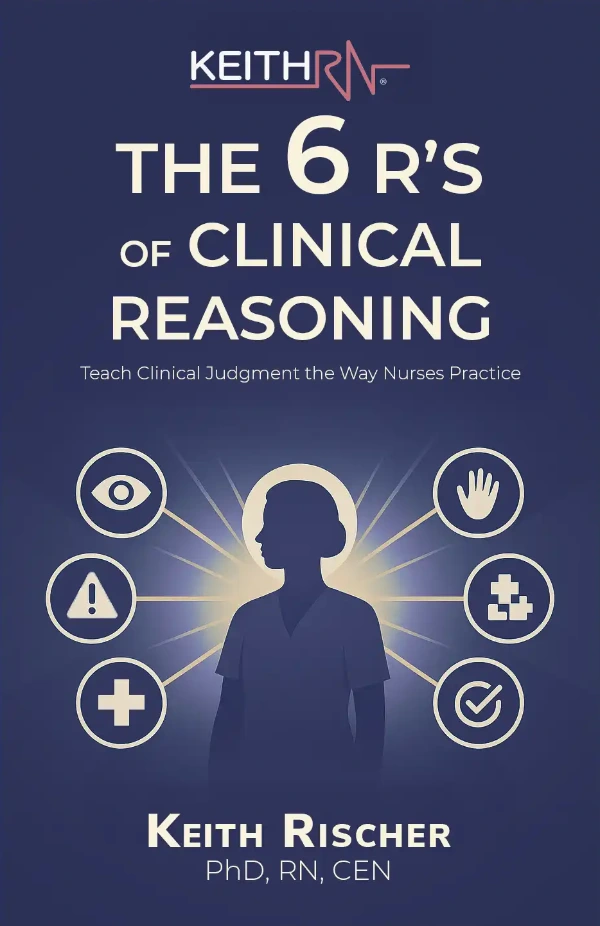
Since I started my doctorate work this fall, I will be blogging only every other Friday. I am posting regularly in my closed Facebook group titled Teachers Transforming Nursing Education with practical insights based on my readings and takeaways from my current courses.
Click the link to take the next step to get inside! With almost 400 educator/members you can post a question and get immediate feedback and needed help and learn from other posts!
Feedback is the cornerstone of effective clinical teaching and improves students’ clinical performance (Cantillon & Sargant, 2008). Feedback can be defined as providing specific information that compares the student’s observed performance against the standard that has been taught.
To be effective, feedback must be given with the intent to improve the student’s performance and presented in a way that allows the student to comprehend and accept it so that feedback can be applied in practice (Cantillon & Sargant, 2008).
Principles of Effective Feedback
One of the most important responsibilities that an educator has in the clinical setting is to provide honest, ONGOING feedback on students’ strengths as well as weaknesses and what they need to do to improve. Do not wait until scheduled times (mid-term, etc.) to provide this feedback, but do so in a timely manner.
To create a culture where student feedback will be well received regardless of the content, consistently AFFIRM students and what they are doing well.
Nursing students tend to be high-performing achievers and can feel like failures because of the rigors of nursing school when constructive feedback is given. When feedback is absent, ambiguous, and inconsistent, this is a barrier to student learning (Giles, Gilbert, McNeill, 2014).
As I was doing a recent literature search related to my doctoral studies, I came across a brief article on providing student feedback that resonated with me and I believe can be an effective tool and easy to remember acronym to strengthen clinical feedback by educators.
How to Use the W-R-A-P
One method to provide feedback to students that I was taught as a new educator was the “sandwich” approach. This is done by sandwiching a positive complement with a constructive criticism with another complement.
This strategy fails to engage the student in the thoughtful reflection and need to collaborate with the educator by developing a plan for improvement. This essential step is undermined between the two slices of praise (Beese & Vogelsang, 2018).
To strengthen the effectiveness of student feedback here is how you can use the WRAP:
- Wonder
- Reinforce
- Adjust
- Plan
Wonder
The clinical educator begins a dialogue to encourage critical analysis by the student to REFLECT on the current problem identified in the clinical setting. Challenging a student to identify what did and did not go well encourages them to see both sides of their abilities by requiring them to reflect.
Reflection is powerful and needed to help students think more like a nurse. It is also the fourth and final step that is needed for a nurse to strengthen and develop clinical judgment (Tanner, 2006)
Reinforce
Building on reflection by the student in the wonder stage, the educator reinforces or affirms the positive behaviors and attitudes that the student may not recognize. By providing meaningful feedback of student strengths, this provides an opportunity to create confidence in the student’s abilities. This is, in essence, the compliment aspect of the sandwich strategy.
Adjust
The goal here is to have the student acknowledge where they need improvement and identify the reasons why an adjustment is needed. For example how many hours a week is a student working? This could be a barrier to their success and an adjustment in hours may be needed. Any concerns or additional weaknesses that have been identified need to be brought up as well.
Feedback should be factual and descriptive and free of judgment or opinion.
Plan
Once the faculty and student have reinforced what went well and discussed what behaviors or performance needs to be adjusted the final step is to plan what to do next time.
The sandwich framework lacks this needed emphasis. Specific strategies and solutions to make any identified weakness a strength and meet the objectives for the clinical course need to be discussed to remediate successfully by planning accordingly (Beese & Vogelsang, 2018).
In Closing
Strengthen your clinical teaching and providing feedback effectively to strengthen student learning by using the WRAP.
It is an easy to remember framework to maximize student learning by emphasizing reflection, identify strengths and current weaknesses with a plan to address the real problem.
Next time you need to provide student feedback, avoid the sandwich and have a WRAP instead. and see what a difference it can make to promote the development that students require in the clinical setting to be better prepared for real-world clinical practice
Comment Question:
What strategies have you found successful to provide meaningful feedback in the clinical setting?
Comment below and let the conversation begin!
RELEVANT Past Blogs on Clinical Teaching
- Are You Asking These Questions to Help Students Think More Like a Nurse?
- What the Best Clinical Educators Have in Common
- Clinical “Pearls” That Will Prepare Students for Practice
References
- Besse, C. & Vogelsang, L. (2018). The WRAP: An alternative to sandwich feedback in clinical nursing education. Journal of Nursing Education, 57(9), 570.
- Cantillon, P., & Sargeant, J. (2008). Giving feedback in clinical settings. BMJ (Clinical Research Education), 337.
- Giles, T.M., Gilbert, S., & McNeill, L. (2014). Nursing students’ perceptions regarding the amount and type of written feedback required to enhance their learning.
Journal of Nursing Education, 53(1), 23-30.
Keith Rischer – PhD, RN, CEN
As a nurse with over 35 years of experience who remained in practice as an educator, I’ve witnessed the gap between how nursing is taught and how it is practiced, and I decided to do something about it! Read more…
The Ultimate Solution to Develop Clinical Judgment Skills
KeithRN’s Think Like a Nurse Membership
Access exclusive active learning resources for faculty and students, including KeithRN Case Studies, making it your go-to resource.





Thank you, Keith. This is really good. I also learned the sandwich method, but I like the WRAP way better for the reasons you stated. I intend to incorporate this into my teaching, especially clinical.
Linda
I am glad you found it helpful Linda!
Hi Keith
Thank you for blogging about our WRAP framework! We were so excited to publish it and are even more excited to see that members of the nursing community like yourself find our framework valuable! We have been nursing educators for a number of years and can see the value WRAP has across all years of the program in various clinical settings. We completely agree that feedback needs to be timely, balanced, and student-centered, which is why we invented WRAP!
Laura and Cheryl
https://www.healio.com/nursing/journals/jne/2018-9-57-9/%7Ba9cb1952-0e3b-4336-a462-d5f32a58abea%7D/the-wrap-an-alternative-to-sandwich-feedback-in-clinical-nursing-education.pdf
What a blessing to have your feedback as one of the co-authors of this article that inspired this blog! Thank you for taking the time to put this article together and share it with nurse educators and congratulations on having it published! If you have other ideas or anything else you would like to share do not hesitate to reach out and connect and would love to give you the opportunity to share more on the future blog!
Hello!
Thank you for the WRAP acronym. I have been a clinical instructor for 3 years now and I will be using this method next semester. I believe in a collaborative experience between student/instructor. Giving positive feedback is easy for me, but discussing how they can improve takes a lot of thoughtful communication without damaging their self esteem. I want the student to feel supported, yet address any deficits right away. WRAP allows me to open up the conversation in a consistent way.
Thanks for sharing Sherri! Put to good use in your program and agree that collaboration with evaluation is always a win-win!